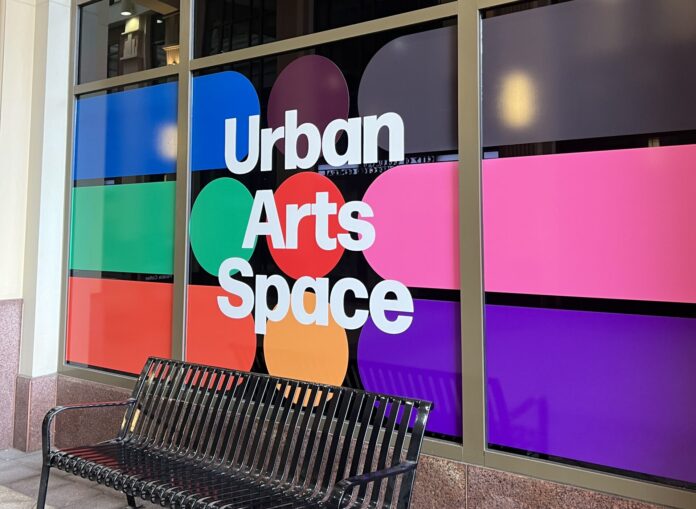Urban Arts Space (UAS) is a community gallery operated by The Ohio State University. UAS has two locations, one in the Hopkins Hall building on OSU’s campus and another in downtown Columbus, Ohio. Both of these locations are free for the community to visit and have a constant offering of new exhibitions, community events, and student engagement opportunities. Over the past summer I had the opportunity to begin a graphic design internship. While my focus is designing marketing materials for galleries, I have learned the most about the logistics that go into installing an exhibition, how to appropriately communicate with artists, and what it takes to plan and execute a successful community event.
This experience is what first drew me to the focus of art transportation. As a small local gallery we typically work with artists who are operating within 330 miles of UAS and typically on tight budgets fulfilled by grants and fellowships. These factors make the perfect case study to better understand art transport on a smaller level than museums like The Guggenheim, Tate, and MoMA. These artists are often bringing artwork to the gallery in their personal vehicles, renting UHaul trucks, or even walking into the gallery with their pieces in hand. While these pieces aren’t worth missions like the works of Picasso or Basquiat, that doesn’t change the fact that there is still inherent emotional and monetary value placed on them.
My goal with my primary research was to better understand the steps that artists and curators alike approach the transportation of these pieces and the impact that their safe arrival and installation has on the community.
Due to scheduling conflicts, I wasn’t able to complete my primary research before the review of my research. My intention was to interview Koen Vrij, Merijn van der Heijden, Dr. Terron Banner, and Jeremy Stone, who are all individuals who have careers in art curation, installation, and community outreach and now work in different divisions of The Ohio State University. Koen, Merijn, and Dr. Banner are both full time staff at UAS. Merijn has been the Director of UAS since 2017, Dr. Banner is a professor of Arts Management as well as the Manager of Community Learning and Experience, and Koen has been the Manager of Exhibition Logistics and Facilities for the past two years. Jeremy Stone previously had this job, but now works in special collections curation with the university libraries.
I chose to interview these individuals because their jobs have allowed them to interact with artists and audiences who are typically local to Columbus, Ohio or the midwest region which is where my survey is also based. While my interviews are yet to come, my experience working with installation and strike at Urban Arts Space allows me to make hypotheses about what I might encounter when discussing art transportation with the staff at Urban Arts Space.
Additionally, I will conduct interviews with artists working in and around Columbus, Ohio. This group of people will include individuals who took my survey and indicated that they would be comfortable with participating in follow-up interviews as well as artists who have shown work in local galleries.
My hypothesis is that due to limited budgets and the lack of readily-available art storage solutions for small local creators that there is an increased level of damage that happens to their work. Increased standards for the transport of artwork across different museums and galleries would reduce this phenomenon while also possibly resulting in decreased costs for supplemental transportation supplies. If personal vehicles were able to provide more storage options to their consumers, these could be utilized to preserve the integrity of art while in transportation.




